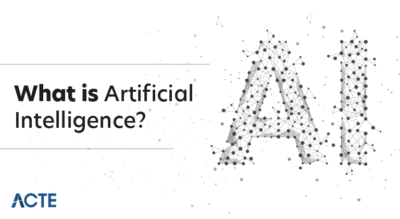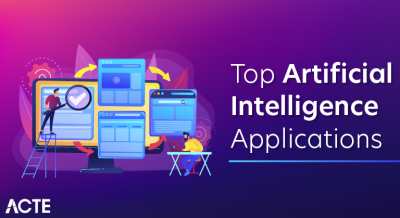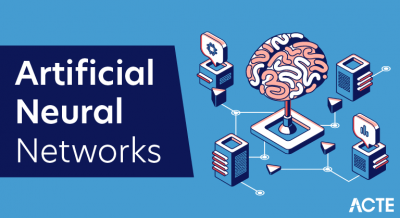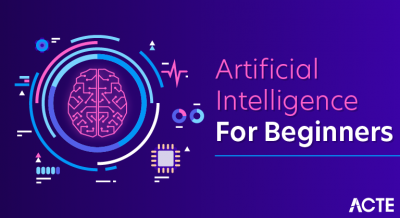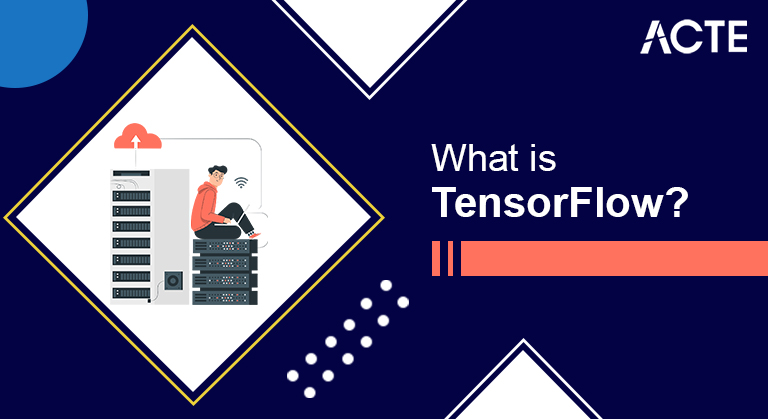
It is an open source artificial intelligence library, using data flow graphs to build models. It allows developers to create large-scale neural networks with many layers. TensorFlow is mainly used for: Classification, Perception, Understanding, Discovering, Prediction and Creation.
- Introduction to TensorFlow
- TensorFlow Example
- Characteristics of TensorFlow
- History of TensorFlow
- How TensorFlow Works
- TensorFlow Architecture
- Where can TensorFlow run?
- TensorFlow Components
- TensorFlow Algorithms
- Benefits of TensorFlow
- Conclusion
Introduction to TensorFlow:
TensorFlow is an open source end-to-end supply for making machine learning applications. It’s a symbolic mathematical library that uses knowledge flow and a distributed system to perform numerous tasks that specialise in coaching and understanding deep neural networks. It permits engineers to make machine learning programs employing a kind of tools, libraries, and community resources.
Currently, the world’s most well-liked library is Google’s TensorFlow. Google Product uses machine learning altogether of its product to boost search engines, translations, image captions, or recommendations.
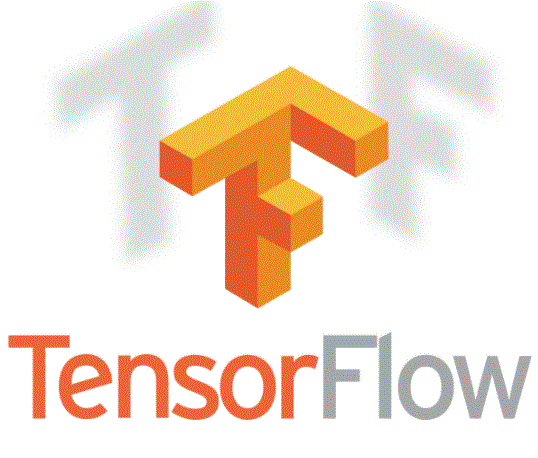
- Researchers
- Data Scientists
- Program organisers
TensorFlow Example:
Providing a sensible example, Google users will experience fast and refined search expertise with AI. Once a user sorts a keyword within the search bar, Google provides a recommendation regarding what may well be a subsequent word.Google needs to use a reading machine to take advantage of their massive databases to convey users an improved expertise. 3 completely different teams use machine learning:
They can all use a constant set of tools to figure along and improve their potency.
Google simply does not have the data; they need the most important pc within the world, therefore the Tensor Flow is intended to live. TensorFlow may be a library created by the Google Brain Team to accelerate machine learning and in-depth analysis of the neural network.
It is designed to use multiple CPUs or GPUs and even mobile applications, and has fewer pages in many languages such as Python, C ++ or Java.
Characteristics of TensorFlow:
TensorFlow options. Let’s scan the exciting options of TensorFlow:
1. Open supply library
It is an Associate in Nursing open supply library that enables fast and straightforward mathematical learning. It makes it simple to modify algorithms from one tool to a different TensorFlow tool.With the assistance of python, it provides a complicated API for varied machine development and in-depth learning algorithms.
2.It is simple to run
We can use TensorFlow applications on varied platforms like humanoid, Cloud, IOS and varied formats like CPUs and GPUs. This permits it to be used on a spread of embedded platforms. TensorFlow has its own hardware designed to coach neural models called Cloud TPUs (TensorFlow process unit).
3. Correct error like a shot
Allows you to show every location, that is, every operation in relevancy it takes a look at. The Tensor Board works with a graph to examine its performance victimisation of its dashboard. Provides laptop graphing ways that support a straightforward homemade paradigm.
4. Effectively
It works with multi-dimensional arrays with the assistance of an information structure tensor that represents edges on the flow graph. Tensor identifies every building victimisation 3 criteria: quality, type, shape.
5.Very
It provides an area to predict stocks, products, etc. with the assistance of coaching victimisation identical models and completely different knowledge sets. It also permits for consistent and asynchronous learning ways and knowledge entry. The graphical methodology protects the uniformity of the distribution.
6. simple Testing
TensorFlow converts data into analysts-type neural networks of sensory data. TensorFlow feature columns permit a bridge between data and measurements to coach the model. This could add speed to the model for quicker developing data.
7. Self-discharge
TensorFlow provides an outlined level of output by reducing code length and cutting development time. The user has to concentrate on Associate in Nursing skilled who ignores the right thanks to deliver inputs to tasks. The user will choose the acceptable model counting on the system demand.
8. Flexibility
TensorFlow provides a method for determining complicated topologies with support for the Keras API and knowledge entry pipelines. Keras provides easier prototyping and is best fitted to object-oriented feeling networks.
TensorFlow simplifies machine learning with the assistance of these options. permits the user to make and manage a system to make differing types of time period models
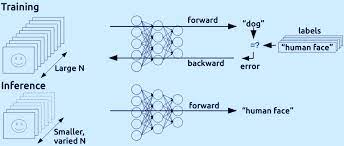
- Gmail
- Picture
- Google computer programme
History of TensorFlow:
A few years ago, in-depth learning began to surpass all different machine learning algorithms once given massive amounts of knowledge. Google has complete that it will use these deep neural networks to enhance its services:
They created a framework referred to as TensorFlow to permit researchers ANd developers to figure along on an AI model. Once upgraded and scaled, it permits additional individuals to use it.
It was 1st created public in late 2015, whereas the primary stable version appeared in 2017. it’s open supply below the Apache Open supply licence. you’ll be able to use it, modify it and spread a changed version for complimentary at Google.
Next during this in-depth study of TensorFlow, we’ll study TensorFlow structures and the way TensorFlow works.
How TensorFlow Works:
TensorFlow permits you to create knowledge flow graphs and structures to outline however knowledge travels on a graph by taking input as a multi-dimensional system referred to as Tensor. permits you to form a multidimensional language of tasks which will be performed during this input, getting one direction and coming back within the alternative as output.
- Prefers data
- Build a model
- Train and moderate the model
TensorFlow Architecture:
TensorFlow architecture works in three areas:
It is called TensorFlow because it requires input as a multidimensional array, also known as tensors. You can create the type of flow chart of functions (called Graphs) that you want to perform in the input. The input enters at the end, then flows into this multi-task system and exits the other end as the output.
That is why it is called TensorFlow because the tensor enters it flowing through a series of functions, and then exits on the other side.
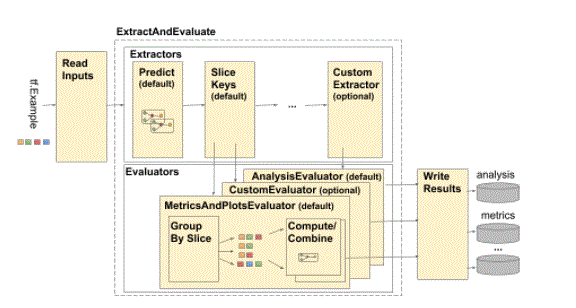
- Run Phase or Inference Phase: Once training has been completed TensorFlow can be run on many different platforms. You can run it.
- Desktop running Windows, macOS or Linux
- Cloud as a web service
- Mobile devices like iOS and Android
- You can train it on many machines and then run it on a different machine, once you have a trained model.
Where can TensorFlow run?
TensorFlow hardware and software requirements can be broken down into. Development Phase: This is where you train the model. Training is usually done on your desktop or laptop.
The model can be trained and deployed on GPUs and CPUs. GPUs were originally designed for video games. Toward the end of 2010, Stanford researchers found that the GPU was very good at matrix and algebra performance to make it faster to perform these types of calculations.
Deep learning depends on many matrix repetitions. TensorFlow is a very fast computer multiplication matrix because it is written in C ++. Although used in C ++, TensorFlow can be accessed and controlled by other languages in particular, Python.
Finally, an important feature of TensorFlow is TensorBoard. TensorBoard enables you to monitor the graphics and appearance created by TensorFlow.
- Designed to work on multiple CPUs or GPUs and mobile operating system.
- The portability of the graph allows saving calculations for immediate or later use. The graph can be saved for future use.
- All calculations on the graph are done by connecting tensors together.
- The tensor has a node and edge. The node controls statistical performance and produces the final results. Edge edges define the input / output relationship between the nodes.
TensorFlow Components:
Tensor
The name TensorFlow is derived directly from its main framework: Tensor. In TensorFlow, all statistics include tensors. A tensor is a vector or matrix of n size representing all types of data. All values in the tensor hold the same type of data as the known (or lesser known) form. The shape of the data is the size of the matrix or similar members.
The tensor can be started on input data or calculation results. In TensorFlow, all operations are performed within the graph. A graph is a set of calculations that occur in sequence. Each function is called an op node and is connected to each other.
The graph shows the ops and connections between the nodes. However, it does not show prices. The edge of the nodes is the tensor, that is, the way to complete the data processing.
Graphs
TensorFlow uses a graph layout. The graph collects and describes all the mathematical series performed during the training. The graph has many advantages:
TensorFlow Algorithms:
Below are the algorithms supported by TensorFlow:
Currently: TensorFlow 1.10 has a built-in API:
Dropdown: tf.estimator.LinearRegressor
Split: tf.estimator.LinearClassifier
Advanced Learning Categories: tf.estimator.DNNClassifier
In-depth and deep reading: tf.estimator.DNNLinearCombinedClassifier
Boosted tree regression: tf.estimator.BoostedTreesRegressor
Enhanced tree classification: tf.estimator.BoostedTreesClassifier
Benefits of TensorFlow:
1. Open source field- It is an open source platform that makes it accessible to all nearby users and is ready for any system upgrade.
2. Data view- TensorFlow provides a better way to visualise data in its image form. It also allows easy editing of nodes with the help of TensorBoard. This reduces the effort to visit the entire code and successfully solves the neural network.
3. Keras friendly- TensorFlow is compatible with Keras, which allows its users to write some high-level performance categories on it. Keras provides system-specific functionality in TensorFlow, such as plumbing, scaling, and enthusiastic use. Keras’ Active API supports a variety of topology with a variety of input, output, and layer combinations.
4. Scalable- Almost all operations can be performed using this field. With its feature-wide distribution and graphical representation of the model it allows its users to upgrade any type of system using TensorFlow. TensorFlow has therefore been able to develop systems like Airbnb, Dropbox, Intel, Snapchat, etc.
5. Compatible- It is compatible with many languages such as C ++, JavaScript, Python, C #, Ruby, and Swift. This allows the user to work in a comfortable environment.
6. Similarities- TensorFlow finds its use as a hardware acceleration library due to the similarity of the work models. It uses different distribution techniques on GPU and CPU systems. The user can choose to apply his code to any of the properties based on the modelling rule. The system selects the GPU if not specified. This process reduces memory allocation to some degree.
7. Building support- TensorFlow also has its own TPU architecture, which makes calculations faster than the GPU and CPU. Models built using TPU can be easily installed in the cloud at a cheaper price and used at a faster price.
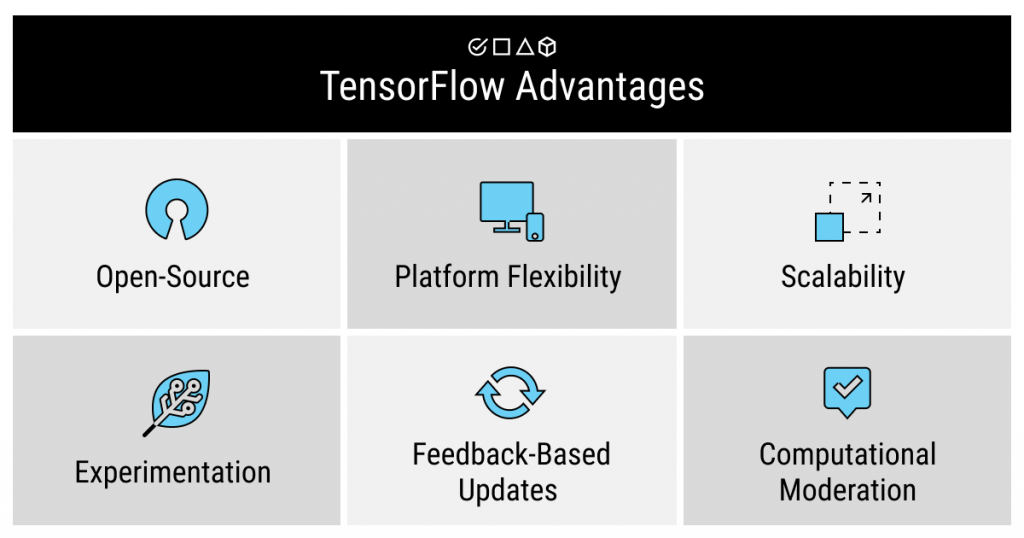
- TensorFlow Description: TensorFlow is the most popular library for in-depth reading in recent years. A physician using TensorFlow can create any in-depth study structure, such as CNN, RNN or a simplified neural network.
- TensorFlow is widely used by academics, beginners, and large companies. Google uses TensorFlow on almost every other Google product, including Gmail, Image and Google Search Engine.
- The Google Brain team created TensorFlow to close the gap between researchers and product developers. In 2015, they made TensorFlow public; it grew rapidly in popularity. TensorFlow is an in-depth reading library with multiple repositories on GitHub.
- Employees use TensorFlow because it is easier to use on the scale. Designed to work on clouds or mobile devices like iOs and Android.
Conclusion:

